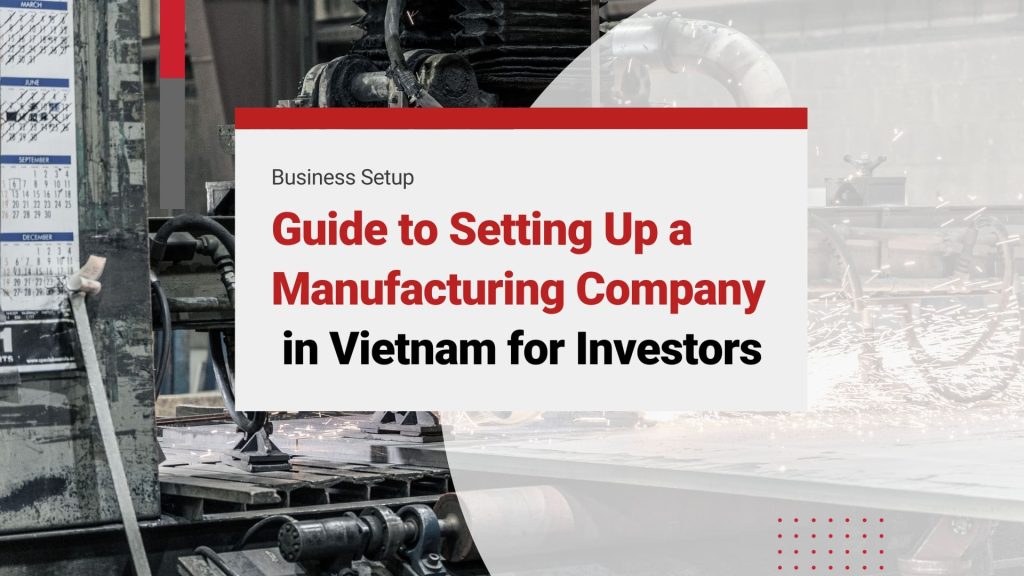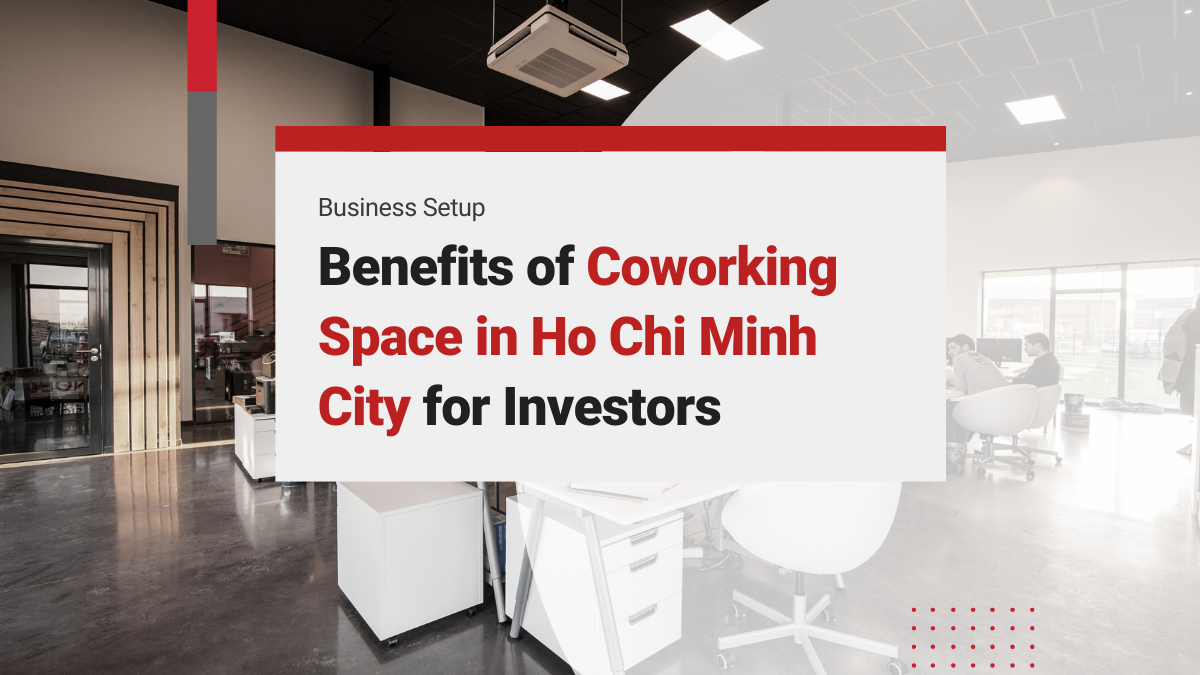A manufacturing company worldwide is searching for the next best location to set up operations in light of the US-China trade conflict. However, only a few nations, like Vietnam, have the required human capital and infrastructure to set up manufacturing companies in Asia. Currently, Vietnam is not just a great place for manufacturing textiles and footwear, but it is also home to electronics, machinery, and automotive manufacturing. Vietnam stands out due to its stable political environment, a wealth of natural resources, cooperative government, and cheap but skilled workforce.
Investing in Vietnam? Check out InCorp Vietnam’s Company Setup Services
Vietnam’s Manufacturing Growth Outlook in 2025
Vietnam’s manufacturing sector continues to play a pivotal role in the country’s economic growth, contributing 23% of GDP and accounting for 25% of total exports. In 2024, foreign direct investment (FDI) in manufacturing surged to $24 billion, representing 63% of total FDI inflows. The sector has attracted major global players such as Samsung, LG, Foxconn, Hyundai, Nestlé, and TetraPak, reinforcing Vietnam’s reputation as a prime investment destination. Top-performing industries include electronics, auto parts, semiconductors, textiles, and agri-food, each driving technological advancements and export growth.
Additionally, Vietnam is strategically positioned as a key “China Plus One” destination. The ‘China +1’ concept involves extending manufacturing operations beyond China to incorporate an additional location, often in a neighboring country. This strategic approach aims to decrease reliance on China and safeguard business operations amidst uncertainties. Manufacturing companies are the primary beneficiaries of a China +1 strategy as they can diversify supply chains, reduce geopolitical risks and get access to preferential trade agreements that Vietnam offers, such as the CPTPP and EVFTA, which lower tariffs and expand market access.
Top Manufacturing Industries to Start a Company in Vietnam
Electronics
In 2024, Vietnam’s electronics industry witnessed a remarkable boom, achieving an export turnover of US$126.5 billion, which accounted for one-third of the nation’s total export value, according to the General Statistics Office (GSO). Of the total, electronics and components exports soared to $72.56 billion, marking a 27% increase year-on-year. Meanwhile, exports of phones and components reached $53.9 billion, the GSO reported. The key destinations were China, the US, and South Korea. Notably, the country’s exports of computers, electronic components and phones to Europe and America exceeded $56.9 billion, contributing nearly 45% of the total export turnover.
Electronics producers worldwide are increasingly turning to Vietnam to produce their goods in recent years. For instance, Xiaomi Corp. declared that it had begun manufacturing smartphones in Vietnam to increase its regional presence. Similarly, the production of smartphones by Samsung Electronics contributed US$57.5 billion to the nation’s exports in 2021.
According to the General Statistics Office, the electronics industry exported goods worth US$116 billion in 2021. Handsets and component exports totaled US$57.5 billion, while electronic, computer, and component exports came in at US$50.8 billion, up 11.5% and 13.6% from the prior year.
Read Related: Exploring Vietnam’s US$116 Billion Electronics Industry
Many of the biggest technology companies in the world, including Samsung, Foxconn, Canon, LG, and Intel, operate factories in Vietnam.
Major tech companies have significantly influenced the nation’s electronics industry (EI) growth. Vietnam is the world’s 12th-largest exporter of electronics, largely due to foreign direct investment (FDI), which accounts for a large chunk of the country’s EI value.
Garments
According to the Vietnam Textile & Apparel Association (VITAS), the country’s textile and apparel export revenue reached US$40.4 billion in 2021 and is projected to reach US$45 billion by the end of 2022.
For the past five years, the Vietnamese textile and apparel industry has maintained a strong growth rate, averaging between 20 – 26% annually.
The country is listed third among countries with the highest global textile and apparel export turnover. 5.2% of the worldwide textile and apparel market comprises goods shipped from Vietnam.
As of early 2022, Vietnam has displaced China as Nike, Inc.’s primary production location for footwear. Meanwhile, Nike’s financial report for 2021 shows that 51% of its footwear was created in Vietnam. Simultaneously, as per CNA, production in China declined to 21% from 35% in 2006.
Read Related: Vietnam Clothing Manufacturers: Why Vietnam is a Premier Destination for Apparel Production
Food Processing
Recent years have seen a lot of M&A activity in the food processing sector in Vietnam, leading to the emergence of “giants” (e.g. Pan Group, Thanh Cong, Kido, and Masan) and active investment from Thailand and Korea’s most prominent names in the FMCG (fast-moving consumer goods) sector.
According to reports, there are still potential investment prospects in Vietnam’s food processing business, particularly in the dairy and beverage sectors.
The import turnover for prepared and preserved seafood items was US$14.1 million in Q1 2020, a 5% decrease from the previous year. At the same time, nearly US$6.38 million worth of processed beef products were sold, a 16% decrease compared to the same time in 2019.
These numbers can be attributed to the disruption in trading activities and the significant decline in domestic demand due to COVID-19.
In Q1 2020, there were 48,000 tons of agriculturally processed food in stock. At almost 43,000 tons, coffee, pepper, and cashews had the biggest stock quantity, followed by seafood items. As a result, the food processing sector, which recorded a 96% increase over the first six months of 2020, was among the six sectors with the highest inventory index.
Businesses that invest in high-quality processing technology play a crucial role in boosting the agriculture sectors and realizing the nation’s growth objectives. The industry for processing agricultural products in Vietnam will rank among the top 10 in the world by 2030. The country will also act as the global logistics and processing hub with the capacity to meet the requirements of agricultural production.
Read Related: Food & Beverage Industry in Vietnam (Updates in 2024)
Automobiles
The vehicle sector in Vietnam is expanding, making it a lucrative market for all foreign investors. This market’s average annual growth rate is between 20 – 30%, exceeding the Ministry of Industry and Trade’s expectations. The growth can be attributed to the importation of automobiles owned by foreigners and the brand-new Vietnamese automobile manufacturer, VinFast, which is generating headlines worldwide.
In 2018, VinFast attracted a lot of attention when it unveiled the 1st “made-in-Vietnam” car at the Paris Motor Show. With the goal of a sustainable, green future, VinFast is striving to bring accessible electric vehicles (EVs) to Vietnam.
The People’s Committee of Ha Tinh Province, in partnership with Vingroup, has started constructing the VinES Battery Manufacturing Factory worth around USD 173 million.
Vietnam imported more than 100,000 cars in the first nine months of 2021, a 267% increase from the year before. Most of the imported vehicles had fewer than nine seats, indicating a rise in the use of private cars and highlighting the rising spending power among the Vietnamese.
Moreover, Vietnam’s Ministry of Finance proposed a tax policy in November to lower or remove taxes on domestically produced car components. This would lower the total production costs and encourage investment in the country’s vehicle industry. The Ministry also advocated lower taxes for automakers and the industries supporting them.
The agreement will expose Vietnam’s automobile industry to important European auto markets like Germany, France, and the United Kingdom. In addition, the government has agreed to remove all import duties over the following 7 to 10 years on automotive exports from the EU to Vietnam, comprising vehicles and auto components.
Read More: Vietnam’s Automobile Industry: Growth and Innovation in a Dynamic Market
Key Industrial Parks and Economic Zones
Currently, Vietnam is home to over 400 planned industrial zones, with around 300 already operational and maintaining an impressive average occupancy rate exceeding 80%. Leading provinces such as Binh Duong, Dong Nai, Bac Ninh, Hai Phong, and Long An continue to attract substantial industrial investment.
According to CBRE, a global commercial real estate services firm, Vietnam’s industrial zones sustained strong performance in 2024, with the northern region reaching an 80% occupancy rate and the southern region achieving 89%. In the north, more than 400 hectares of industrial land were absorbed, largely driven by robust demand in sectors like electronics and electric vehicles. Meanwhile, the south saw a notable 52% decline in absorption, with only 265 hectares taken up—well below the previous year’s level. Despite this slowdown, key transactions were concentrated in Ba Ria – Vung Tau and Long An provinces.
Rental prices in northern industrial zones continued to narrow the gap with those in the south, driven by rising demand in key markets such as Hai Duong and Hai Phong. By the end of 2024, the average rental rate in the north is expected to reach US$137 per square meter for the remaining lease term, representing a 4.2% increase year-on-year. In comparison, southern industrial zones recorded an average rental price of US$175 per square meter, reflecting a more modest growth of 1.4% from the previous year.
Read More: Key Insights on Vietnam’s Industrial Zones in 2025
Setup Guide for Manufacturing Companies
Choosing a Company Structure
Foreigners can establish a 100% foreign-owned business in Vietnam, but it can be started only as a Limited Liability Company/LLC or a Joint Stock Company/JSC.
- 100% Foreign-Owned LLCs (Limited Liability Companies): The most common structure for full control and flexibility, ideal for small-to-medium enterprises. LLCs can be set up quickly, typically in 45 days, and offer investors complete ownership.
- Joint Ventures (JVs): JVs are perfect for projects requiring local expertise or access to land and supply chains. They allow for shared risks and investments between foreign and local partners, making them a good choice for businesses looking to expand and collaborate with local entities.
- Joint Stock Corporations (JSCs): JSCs have no upper limit on the number of shareholders and can be set up by individuals or companies, making them suitable for larger, more complex projects.
- BOI-Registered Entities: Ideal for projects seeking specific benefits from incentives or special economic zones (SEZs), which offer tax exemptions and other regulatory advantages.
- Representative Offices: A representative office allows businesses to carry out non-commercial activities like marketing, recruitment, and promotional efforts but does not engage in direct sales.
- Branch Offices: A branch office is part of your parent company’s international network, and it operates in sync with the parent company. It eliminates the need for setting up a separate legal entity but requires a legal representative in Vietnam.
Choosing the right business structure depends on factors like the scale of operations, level of control, and strategic goals. Each option offers different benefits, whether you seek full ownership or are looking for a local partner or specific tax advantages.
Read More: Doing Business in Vietnam: 4 Types of Business Investors Should Know
Steps for Registering a Manufacturing Company in Vietnam (2023 Update)
International investors should carefully follow each of the stages listed below to fully comply with Vietnam’s requirements for registering international corporations.
- Decide on the factory’s location. The factory’s location can be outside or within industrial parks, high-tech zones, economic zones, and export processing zones.
- Provide the documentation for your business and employees.
- Set up a business address and locate a legal agent.
- Secure the Department of Planning and Investment’s Investment Registration Certificate (IRC).
- Obtain a Certificate of Enterprise Registration (ERC).
- Put a company seal in the text (essential to authorize all issued documents).
- Create a bank account that contains the money you have to invest.
- Register for taxes and get an electronic sign (this is required for e-invoicing).
- Extra licenses may be necessary depending on your manufacturing product types, business lines, and if the process would cause any environmental impact. These additional licenses take 10 to 30 days to complete.
2025 Legal Updates in Vietnam’s Manufacturing Industry
Vietnam’s manufacturing sector is undergoing significant regulatory changes aimed at aligning with international standards and fostering a more transparent, efficient business environment. These updates span key areas, including investment procedures, environmental regulations, labor laws, and tax policies, all designed to simplify administrative processes and attract both local and foreign investors.
- Environmental Protection Law: Decree No. 153/2024/ND-CP, effective from January 5th, 2025, introduces an environmental protection fee on air emissions from industrial facilities. This initiative strengthens Vietnam’s air pollution control measures and further aligns the country with global environmental standards.
- Investment Law: Law No. 57/2024/QH15, effective from January 15th, 2025, streamlines investment procedures by reducing project implementation timelines by 260 days. The law shifts from a “pre-approval” to a “post-check” system, significantly simplifying processes related to construction, environmental impact assessments, and fire safety.
- Global Minimum Tax: This new regulation targets foreign-invested manufacturers with consolidated revenues exceeding EUR 750 million in at least two of the past four years. It requires these companies to pay additional corporate income tax (CIT) to comply with the global minimum tax standards, aligning Vietnam’s tax policies with international norms.
These legal updates aim to create a more business-friendly environment, enhance Vietnam’s competitiveness, and ensure compliance with global regulations, positioning the country as an increasingly attractive destination for investment in the manufacturing sector.
7 Things to Consider Before Setting Up a Manufacturing Plant in Vietnam
1. Determine the Capital and Expenses
Financial resources are always one of the first things investors must consider before building a Vietnam manufacturing plant. Therefore, investors need to come up with a budget plan with necessary costs included: lease, utilities, transportation, salaries, and many other costs that may incur during the production process. Then, investors also have to make sure that the capital they have is sufficient for factory setup and operation.
2. Identify if the Plant Location is Suitable for the Production Process
The location of a manufacturing plant can impact the production process significantly. You must determine if the location is appropriate for the smooth running of your production and if it enables convenience for transporting your finished products. The planned location must enable a seamless flow of the entire process from start to finish.
3. Know the Workforce
Every industry needs staff with specific skills to fill the positions. You need to know what kind of talent, qualification, and skill you need in your employees and only go ahead with recruiting them. Determining the type of workforce you need can help you allocate your financial resources appropriately.
4. Figure Out the Machinery Structure
Vietnam manufacturing plants require machines for production. You shall calculate the number of machines necessary and then only decide which factory you should rent. Small factories are inexpensive but they have only a few machines and small machines. Big factories, on the other hand, have more and bigger machines but are more expensive. Therefore, you should know the machinery structure your business requires and choose the one that can increase production line efficiency.
5. Find Reliable Suppliers
As a smart investor, you must meticulously get into the details of supplier information. Only suppliers that provide quality products or materials shall have a long-term partnership with your business. Unreliable suppliers can disrupt or even halt your manufacturing process, leading to a huge loss of time, resources, and productivity.
6. Analyze Customers’ Requirements
Carrying out comprehensive market research can help you identify target customers’ needs and requirements. Only when you know who your target audiences are and what they need will you know what to produce and the quantity to produce.
7. Ensure Legal Compliance
Legal compliance is an important matter to take care of when starting any kind of business. Do check if your Vietnam manufacturing plant has the right license and permit to do certain types of business, and if your processes comply with the current Vietnamese laws.
Conclusion
This article discusses the process of setting up a manufacturing company in Vietnam. It highlights the importance of obtaining the necessary (especially the IRC and ERC), providing a detailed company structure, and conducting due diligence to ensure compliance with local regulations. Furthermore, it suggests that foreign companies should consider joint ventures with local partners, choose the right location for their business, and be aware of land and labor regulations. It also emphasizes that outsourcing to a reliable local consultant can simplify the process and reduce investment risk.
Invest in this innovative emerging manufacturing hub to take advantage of Vietnam’s electronics, clothing, food processing, and automobile manufacturing prowess.

clients worldwide

professional staff

incorporated entities in 10 years

compliance transactions yearly







